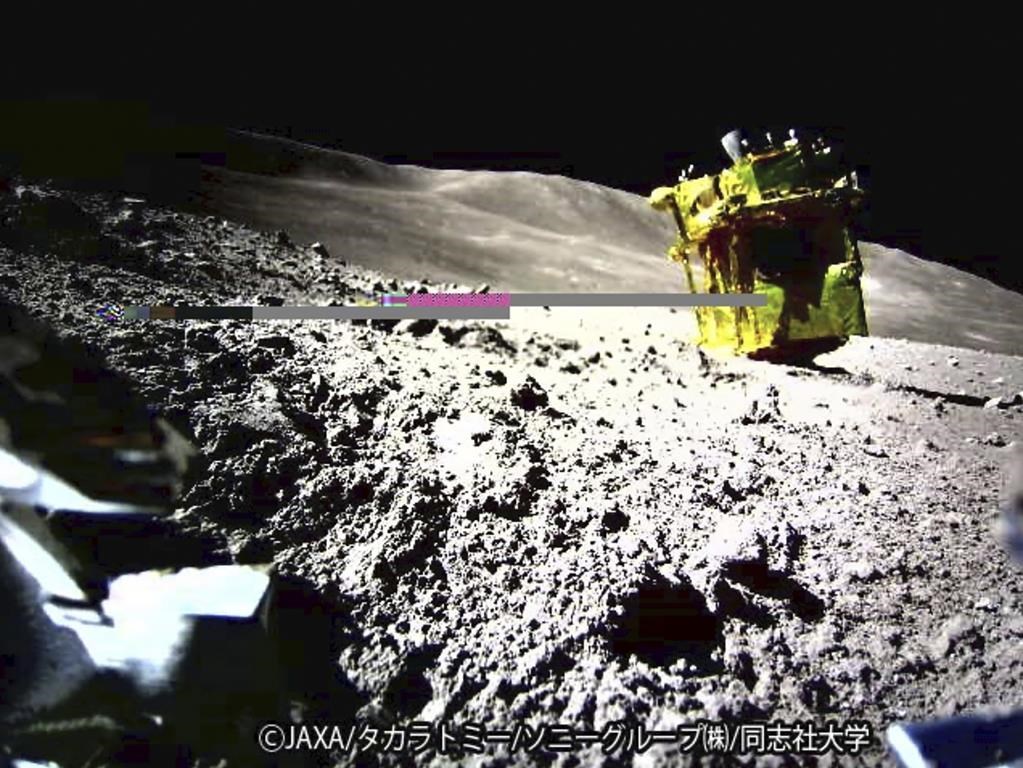The project director at the Japan Aerospace Exploration Agency said that the Lunar Exploration Intelligent Lander, or SLIM, which landed on the Moon last month, used its multi-band spectroscopic camera for four days to study the formation of rocks, and worked to examine lunar rocks. (JAXA), Shinichiro Sakai.
This lunar mission is Japan's first. The probe made a historically accurate landing on January 20, although it landed upside down. Its solar panels were initially unable to see the Sun and were turned off after brief contact with Earth. But on the eighth day, the probe began operating, allowing it to successfully reconnect with the Japan Aerospace Exploration Agency's command center on Earth.
A black-and-white image sent shortly after SLIM reactivated showed the moon's bumpy surface, with six boulders. The rover eventually obtained data on ten rocks in total, all named after dog breeds, such as Akitano, Beagle and Shibino.
“We hope that analyzing the rocks will lead us to the origin of the moon,” Sakai said. By comparing the mineral composition of lunar rocks to terrestrial rocks, one can discover whether the rocks have any elements in common. According to the “giant collision” hypothesis, the Moon was formed as a result of the Earth’s collision with another planet and the rotation of a smaller mass of these two planets.
The JAXA team expected SLIM to study and analyze just one rock. So obtaining data on ten rocks was cause for celebration, inspiring the team to further study the Moon's origins.
SLIM is currently in a state of “hibernation” for another lunar night that will last until the end of February. It is not yet known whether the probe and its spectrometer will survive the frigid temperatures during the night and whether they will be able to “wake up” when sunlight returns.
The probe landed about 55 meters from its target, near Shiuli Crater, an area covered in volcanic rock. This is the most accurate landing compared to previous lunar missions, which generally targeted flat areas at least ten kilometers wide.
If the lander had not experienced a last-minute failure in one of its two main engines, resulting in a more difficult landing than expected, the SLIM landing would have been made just a few meters from the target, the Japan Aerospace Exploration Agency estimates.
SLIM carried two independent probes that were launched just before landing, to record the landing, environment, and other lunar data. The two small probes completed their mission of recording SLIM's initial work and have since been retired.
Thanks to this landing on the moon, Japan became the fifth country to reach the moon, after the United States, the Soviet Union, China and India.

“Hardcore beer fanatic. Falls down a lot. Professional coffee fan. Music ninja.”






More Stories
SALES / PHOTO SALES – Nikon D850 “5 Star” Bare Body Photo Body at €2,539.00
Discovering a new turning point under the Antarctic ice sheet! What are the consequences?
Record number for an insect!